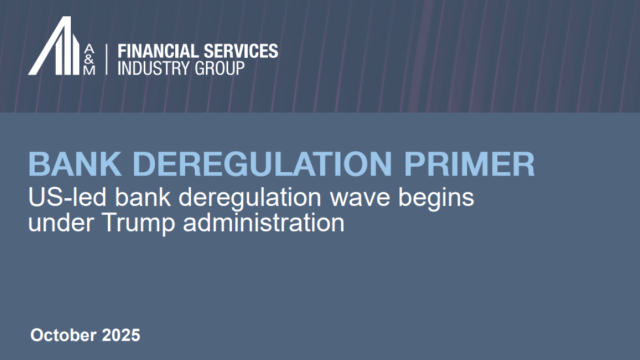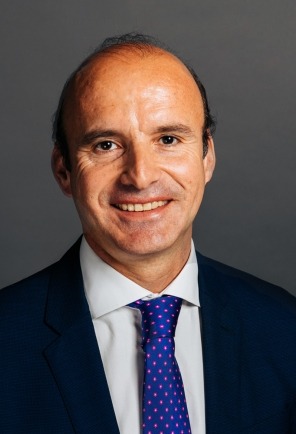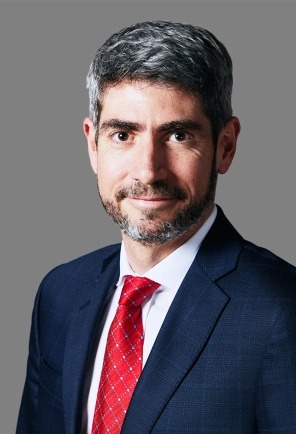Spanish Banking Pulse de la banca – Q2 2022: Industry benchmarks and top performers
Spanish banks are preparing their take-off in profitability, but with high uncertainty in operating and credit costs
- The 'return on equity' (ROE) of banks in the first half of the year stands at 7.8%, 0.1% more than in the same period of 2021
- The banking industry solvency has declined, registering a fully loaded CET1 of 12.46%, mainly due to the return of shareholder remuneration
- Non-performing loans have fallen 36 bps due to the acceleration of sales of doubtful portfolios and the cost of risk maintains its downward trend reaching 0.36%
- Alvarez & Marsal's ranking for large banks is headed by BBVA, while that of medium-sized banks is led by Kutxabank
Madrid - 6 October 2022 - The global professional services firm Alvarez & Marsal ("A&M") today announced the results of the sixteenth edition of "The Pulse of Spanish Banking". This study analyzes the evolution of the top ten Spanish banks in terms of growth, liquidity, efficiency, risk, profitability and solvency throughout the second quarter of 2022, highlighting the key performance indicators of the industry and scoring them according to the KPIs related to each area of analysis. Additionally, the report analyzes the impact of moratoriums and public guarantee schemes (ICOs), the potential impact of cost pressures and inflation, and ESG criteria as a business opportunity.
The report shows that, during the first half of the year, the banks’ profitability (ROE) stood at 7.8 percent, 0.1 percent more than in the same period of 2021. In the second quarter banks’ ROE decreased due to seasonal effects. Spanish banks are still far from their double-digit profitability target, although their profitability remains above the European average of 6.6 percent. Even with, the cost of risk trending downward, at 15 basis points less than at the end of June 2021, and in the NPL (Non-Performing Loan) ratio, which decreased to 3.38 percent, above the average in Europe (1.9%).
The industry’s solvency levels have decreased to 12.46 percent primarily due to the payment of dividends and share repurchase programs. In comparative terms, European banks still have higher levels of solvency, at around 15 percent. Spanish banks will have to measure their solvency and resilience levels as a comparative to European banks in the 2023 stress tests.
A&M's analysis shows that net interest income (NIM) remains stable compared to the previous quarter at 0.93 percent. However, it is expected that from the second half of 2022 the impact of the revaluation of the Euro Interbank Offered Rate (EURIBOR), will be felt. As of the mid-year 2022, the EURIBOR exceeded its negative range standing above 2 percent.
The sector's Operating Income (OI) fell by 5.1 percent throughout the quarter, due to a contraction in financial operations and the payment of Guarantee Funds. In relative terms only Unicaja, Kutxabank and CaixaBank manage to improve income on assets.
Industry efficiency increased by 124 basis points compared to the previous quarter, standing at 50.87 percent, although; at levels below those presented last year. Bankinter is the only bank that fell short of the long-term 45 percent optimal target set up for the industry.
A&M observed a higher productivity per branch of all entities. Santander had the highest productivity gain in terms of turnover per branch, derived from the closures. Bankinter and Santander are the banks with the highest productivity per branch. During the second quarter of 2022, the NPL ratio has been reduced across all entities at 3.38 percent, due to decrease in non-performing loans, which were reduced by 7 percent in the last quarter along with portfolio sales activities of the largest banks. Coverage remains stable above 60 percent. Compared to the European average, non-performing loans remain high. The entities with the highest level of NPLs are BBVA and Sabadell.
Alvarez & Marsal's ranking for large banks is headed by BBVA, while that of medium-sized banks is led by Kutxabank.
Additional topics included in this edition of The Pulse of Banking
First topic is a comparative analysis of moratoriums and government-guaranteed loans (ICOs) of the four main euro zone countries, Germany, France, Italy, and Spain, reveal relative to the moratoriums already expired, stage three, Spain has the highest level of NPLs with 9 percent, and France the lowest at 3 percent.
In terms of coverage, Spanish banks are at 29 percent, above Germany’s 24 percent, and below France’s 32 percent and Italy’s 38 percent. Regarding ICO (Public Guaranteed Loans), Spain leads in the level of non-performing loans, along with France at 5 percent, while in Italy remains at 1 percent. Regarding the level of potential future NPA (Non-Performing Assets) at stage two, Spain has 21 percent similar to Germany at 20 percent, compared to Italy at 14 percent and France, at 33 percent. The evolution of loans along with the enforcement of the bankruptcy law and the efficient management of unpaid debts will pose significant banking challenges in 2023.
Second topic is an analysis of possible costs that could potentially reverse income improvements derived from rising interest rates, A&M has identified four major rising costs threats facing banks over the next two years. These are
- Inflation is above 10 percent, and may generate upward pressures in operating costs, eroding the efficiency gains of recent years.
- The new banking tax levy, which is expected to reduce approximately 4.5 percent of revenues directly over the next two years.
- A worsening of the risk derived from the economic scenario of lower growth along with increases in energy costs, and the impact of inflation and interest rates companies’ margins.
- A rapid rise in rates coupled with continued inflation potentially leading to customers pressuring for higher or earlier than expected deposit remuneration.
Thirdly, A&M has developed a report of the entities’ readiness to capture the opportunity it has dubbed, named Green PACE (Products, Alignment, Clients and Execution). After climate stress tests are completed during the first half of the year, banks can begin to focus on the transformation and ESG transition business opportunities. The attributes measured in this analysis are "Green Products", "Alignment to Net Zero", "Customer Orientation and Information" and "Execution of Transition Plans". With this metric, it can be evaluated which banks are most prepared to capture the revenue opportunity over the coming 10 years of about 295 trillion euros globally.
According to Fernando de la Mora, Managing Director and Head of Alvarez & Marsal Spain and Portugal: "Spanish banks have started the first part of 2022 with an effort to reduce delinquencies and higher shareholder remuneration, amidst t a complex post-covid recovery impacting costs and risks. The rise in interest rates will begin to be reflected in improving revenues over the coming quarters, which could allow the sector to achieve double-digit returns. However, rising operating costs, the banking tax and the economic uncertainty may counteract profitability improvements. In the medium term, the great opportunity for business growth will be financing the transition to decarbonization for companies and families."
A&M The Pulse of Spanish Banking
The Pulse of Spanish Banking ("El Pulso") is a quarterly report that examines the 10 largest Spanish banks ("top 10") in terms of their activities within Spain and highlights the main performance indicators of the Spanish banking sector. El Pulso's goal is to help the banking sector and board members stay abreast of industry trends.
All data used in this report have been obtained from public sources.
What we analyze: the 10 largest banks in Spain in their business in our country
CaixaBank, BBVA, Santander, Sabadell, Bankinter, Abanca, Unicaja, Kutxabank, Ibercaja and Cajamar
If you would like a copy of the report, you can request it here.
About Alvarez & Marsal
Companies, investors and government entities around the world turn to Alvarez & Marsal (A&M) for leadership, action and results. Private since its founding in 1983, A&M is a leading global professional services company providing advisory services, business performance improvement and recovery management. When conventional approaches are not enough to create transformation and drive change, clients turn to our extensive experience and ability to offer practical solutions to their particular needs.
With more than 6,000 people on four continents, we deliver tangible results for companies, boards, private equity firms, law firms and government agencies facing complex challenges. Our senior leaders and their teams leverage A&M's restructuring heritage to help companies act decisively, drive their growth and accelerate their bottom line. We are experienced operators, world-class consultants, former regulators and industry authorities with a shared commitment to telling clients what it really takes to become a strategic business asset, manage risk and leverage value at every stage of growth.
CONTACTO: Mónica Pastor / Juan Jorganes
KREAB: 691435500 / 645803881
mpastor@kreab.com / jjorganes@kreab.com






